Backing Material
The backing is the fabric that goes on the back of your quilt or blanket. Below are the offerings of each company.
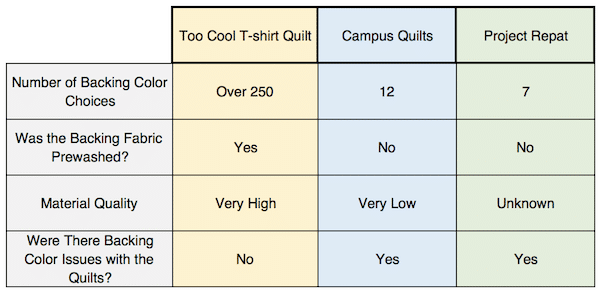
Comments:
Backing Color Choices
The fewer backing color choices a company offers you, the more they are able to keep their cost down. They might not offer you the backing color that you would like.
Was the Backing Fabric Prewashed?
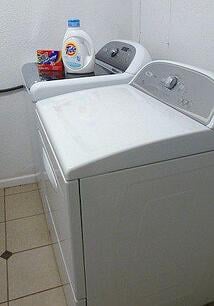 This is very important. Most fabrics will shrink when they are washed. If fabric is used in a quilt before it is washed, you will have issues when you wash your quilt. Typically, the fabric will still shrink.
This is very important. Most fabrics will shrink when they are washed. If fabric is used in a quilt before it is washed, you will have issues when you wash your quilt. Typically, the fabric will still shrink.
However, the rest of the quilt will not shrink, this results in a lumpy quilt. The material that does not shrink has to go someplace. Since it can’t lay flat anymore because the backing material is too small, the material goes up and thus your quilt is lumpy.
The other reason why it is very important to prewash backing materials is that the color dyes in the material might bleed. Think a red sock in a load of whites that turns everything pink. Most of the time after it is washed, the excess dye is washed out and the backing material will no longer bleed.
At Too Cool T-shirt Quilts we make sure that the backing material’s color is set and that it won’t bleed, before we use it in a quilt.
Material Quality
Project Repat uses polar fleece on the backs of their blankets. Since we don’t use polar fleece on a daily basis, we don’t have the expertise to judge the quality of polar fleece they used. But it was thinner than the polar fleece of the Columbia zip up sweatshirts I like to wear.
The fabric that Campus Quilts used on the back of their quilt was very low quality. First, it has a scratchy feeling. Second, you could feel the poor quality of the fabric. It just felt cheap.
At Too Cool T-shirt Quilts we use 100% high quality fabric. This does cost much more than the cheap stuff. The price difference per yard could be $5 to $10 a yard. That’s a lot considering quilts use between 4 and 9 yards of fabric.
Backing Color Issues with the Quilts?
We did have issues with the backing 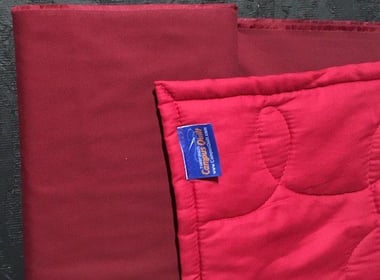 color of the Campus Quilts quilt. We had chosen crimson. Crimson is a dark deep red color, like the University of Alabama.
color of the Campus Quilts quilt. We had chosen crimson. Crimson is a dark deep red color, like the University of Alabama.
When we got the quilt back, the fabric’s color was actually fuchsia pink. We had ordered the crimson for a guy. And when it came back in the pink family, the guys here at Too Cool T-shirt Quilts said that they would not be caught dead with a quilt with that backing color.
On the Project Repat blanket, we ordered purple polar fleece. But, there was not any purple in our blanket - at all. If this request had come to us, we would have talked with the customer about the backing color. We would have talked to the customer about cohesive color theory and how that the color might be wrong for the T-shirts. We may suggested some alternative color choices to tie the whole quilt together. If the customer still wanted purple, we of course respect that choice, but we would have done our due diligence. Project Repat did not take the time.
Read more about backing fabrics here.
Batting
Although you don’t see the batting in a quilt, the batting used is very important. The type and quality directly relates to the longevity of a quilt. Read more about batting here.
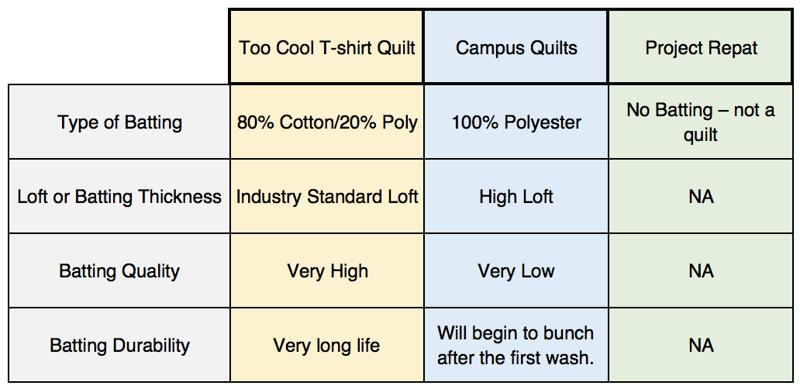
Comments:
Batting Type, Quality & Durability
Project Repat only makes blankets. Therefore, they do not use any batting.
One of the things I was most surprised about with the Campus quilt was the batting. They are using one of the cheapest battings on the market. The loft is very high, meaning that the quilt is very thick, and the batting is 100% polyester. This batting will lump up after the first wash.
Also, the polyester fibers pop through the backing material giving it a slightly hairy look. This is called bearding. This means that the batting fibers are falling apart and traveling through to the backing of your quilt. We could already see this on the back of the brand-new Campus Quilt.
Too Cool T-shirt Quilts uses a batting made by Hobbs Bonded Fibers of Waco Texas. The batting is 80% cotton and 20% polyester. What makes this batting special is that it is needled punched. This means that the batting is run though a roller covered with hot needles. As the needle goes into the batting it melts the polyester fibers. As the needle exits the batting, the hot polyester is pulled up through the cotton fibers and thereby bonds the cotton fibers together. This makes for a very stable cotton batting that is difficult to tear, that does not bunch up and lasts for a lifetime.
Loft or Batting Thickness
You might tend to equate batting thickness to 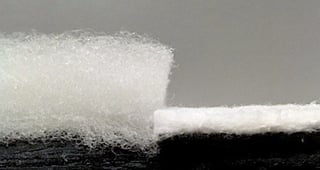 warmth. You might assume a thick batting is warmer than a thin batting. But this is not true. Batting technology has made it so that a thinner cotton batting can be as warm or warmer than a thick polyester batting.
warmth. You might assume a thick batting is warmer than a thin batting. But this is not true. Batting technology has made it so that a thinner cotton batting can be as warm or warmer than a thick polyester batting.
We are not sure why Campus Quilts uses such a thick cheap batting, but it will affect your quilt. The batting thickness means that your quilt cannot be folded and stored as well as a quilt with thinner batting. The thick batting will also bunch up after it is washed. Skilled quilter would not choose such a batting for their quilt. They know that they are asking for trouble if they do.
My guess is that it comes down to money. The batting they are using is about the least expensive batting on the market. The less they spend in making a quilt, the higher their profit margin.

Washing Directions
Your T-shirt quilt should be used and enjoyed. This means that it will get dirty and need to be cleaned. Below are the washing directions for each company.

Comments:
When we opened the box from Campus Quilts, I was dumbfounded when the first thing I read was, “Dry Clean Only.” Are you kidding me?!? Who dry-cleans a T-shirt quilt? But after looking at and feeling the quilt, we were easily able to determine why the dry-cleaning directions.
The big reason: Campus Quilts does not prewash their backing material. If they tell you that you must dry-clean your quilt and you wash your quilt in a washing machine, they are not liable for what happens to your quilt.
This is what will happen:
- The backing material will shrink.The result is that the backing material is now smaller than the quilt top and batting. When the backing material lays flat, the quilt top and batting can no longer lay flat and will bunch up.
- The backing material will bleed. When the backing material bleeds, the dye will show up on the front of your T-shirts.
So, how do we know this?
The same day we received our quilt from Campus Quilts, a new customer had sent us her Campus Quilts quilt to be torn apart and have the T-shirt blocks remade into a Too Cool T-shirt Quilt. She was not happy with their work. Read more about having a T-shirt quilt remade here.
So, we were able to dissect a Campus Quilt. We took one section of the quilt our customer did not want and sewed the raw edges of that sections closed and then we washed it. That’s how we know.
Quilting
The quilting on a quilt holds together the front, the batting and the backing. If the three layers are not held together, the batting will bunch up and be lumpy.
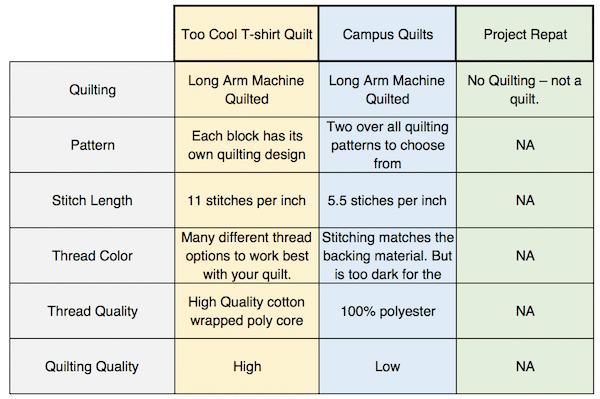
Quilting
Project Repat makes blankets thus there is no quilting. But do note that there is nothing holding the T-shirt material face to the fleece backing material. This means reduced longevity of the blanket.
Both Campus Quilts and Too Cool T-shirt Quilts long-arm quilt their quilts. But the quilting on the two quilts could not be more different. I will go into the differences below.
In this photo - Campus Quilts is left and Too Cool T-shirt Quilts is right.

Pattern
Campus Quilts offers two choices – loops or a meandering pattern. The quilt in the photo above has the loops.The quilting is spaced very far apart. There were only 5 rows of quilting on our quilt. This left large areas not quilted. This will lead to the batting coming apart and bunching up. I had expected more quilting than that. The quilting also started and stopped an inch from the edge of the quilt. It looked like it was just stuck there without thought.
Each block in a Too Cool T-shirt Quilt is quilted with its own unique pattern by an experienced artist. The quilting is close, leaving only small areas on the quilt without quilting. And our quilting is cool!
Stitch Length
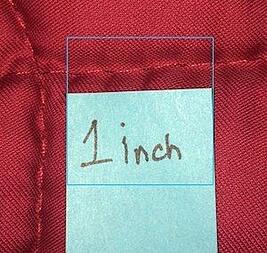
Industry standard for stitches per inch ranges between 10 and 12 stitches per inch.
Campus Quilt’s stitch length is 5 ½ stitches per inch. This means that the stitches are very long. I did a test on my standard sewing machine by setting the stitch length to “basting.” A "basting stitch" is a stitch that is put in to hold something until more stitches can be added. It’s meant to be temporary and removable. My basting stitch was 5 ½ stitches per inch. Thus, Campus Quilts is quilting with a basting stitch.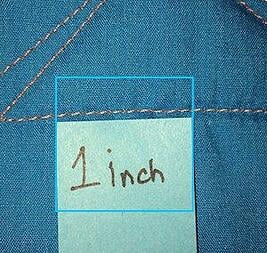
Why? Because it is faster. You can stitch 5 ½ stitches in half the amount of time that it takes to put in 11 stitches. By speeding up the process, they can earn more per quilt. The results you might expect are bunched up batting and stitches that can easily come out.
Too Cool T-shirt Quilts uses 11 to 12 stitches per inch. We have more stitching on one block than Campus Quilts has in their entire quilt.
Thread Color
Campus Quilts matches their thread color to their backing material. When a quilter matches thread color with the backing material they do it to hide or play down the quilting. And since Campus Quilts does not emphasize their quilting, this makes sense.
The problem with matching the quilting thread to the backing color is that if a dark backing color is used, the stitching will be too dark on the front of the quilt.
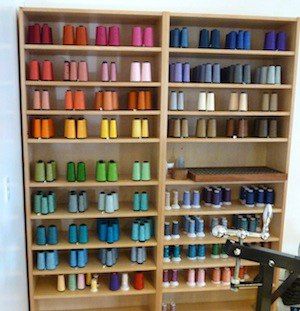 Too Cool T-shirt Quilts uses thread that works with the T-shirts on your quilt. We tend to avoid the darkest colors. The first reason we do this is how dark thread looks on the T-shirts – it tends to look awful. We made one quilt using navy blue thread and were appalled at how it looked. It was just awful.
Too Cool T-shirt Quilts uses thread that works with the T-shirts on your quilt. We tend to avoid the darkest colors. The first reason we do this is how dark thread looks on the T-shirts – it tends to look awful. We made one quilt using navy blue thread and were appalled at how it looked. It was just awful.
The advantage to using a lighter-colored thread is that the contrast between the backing material color and the thread emphasizes the quilting. Because of the contrast and unique quilting the back of our quilts are just as cool as the front!
Thread Quality
When we tore apart that Campus Quilt for our customer, we immediately knew that the thread they used was rayon. The thread just frayed and fell apart. The advantage of rayon is that it is soft and inexpensive. The disadvantage is that it is often not colorfast. Nor is it as strong or durable as polyester and cotton threads.
Too Cool T-shirt Quilts uses cotton or cotton-wrapped polyester threads. These threads are durable, strong and colorfast and yes, more expensive.
Comments:
Quilting is the key component in what makes a quilt a quilt. It's what attaches the three layers together. We want to make sure your quilt will last forever, but that it's also dynamic and interesting to look at. When taking all of that into account, why wouldn't you want the back of your T-shirt quilt to be interesting and as individual as the front of your quilt?
The quilting on Too Cool T-shirt quilts stands the test of time, we have quilts that are over 30 years old and still going strong. I wouldn't trust the quilting on a Campus Quilt's quilt to last a lifetime, its just not designed to.
Binding Style

Comments:
 The binding finished off the raw edges of a quilt.
The binding finished off the raw edges of a quilt.
Project Repat makes blankets not quilts, so their blankets do not have a binding.
Campus Quilts uses a “half binding style” binding on their quilts. They pull the backing material around to the front of the quilt and sew it down. This is a cheap, fast and easy way of finishing off the raw edges of their quilts.
Too Cool T-Shirt Quilts does what is called a full binding. This method involves a separate piece of material used to finish the raw edges of your quilt. The advantage of this method is that it offers you another design feature as well as improves the longevity of your quilt.
In the photo, the Too Cool T-shirt quilt is on the left and the Campus Quilt is on the right. Here you can see what each binding type looks like on the front and the back of the quilt.
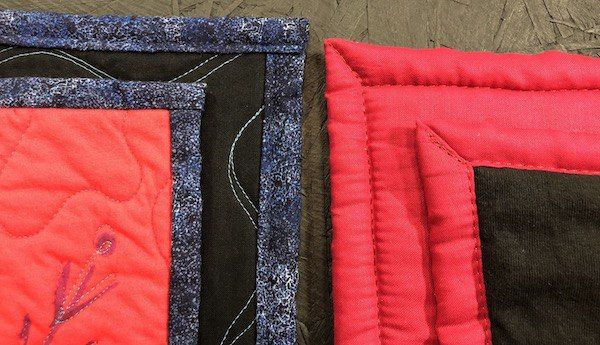
Read more about binding styles here.
Transactions and Cost Overview
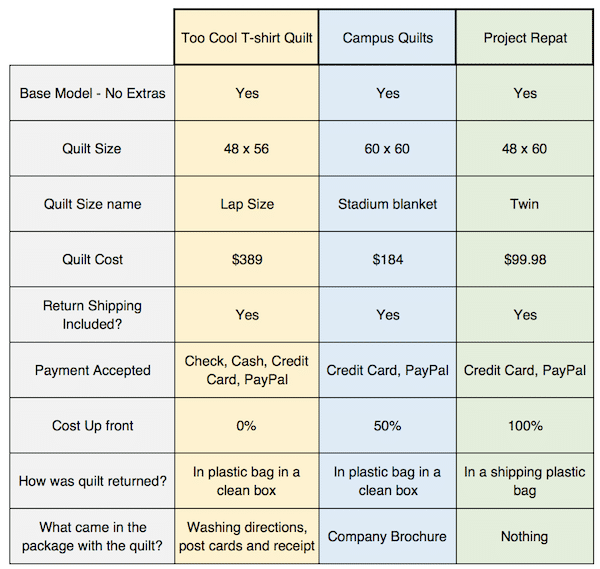
Comments:
The information here is a review and recap of each quilt/blanket made by each company. You can compare each item for yourself. The pricing change from year to year and was the pricing in place at the time this article was written.
Conclusion
The more information you have, the better choices you can make. T-shirt quilts are important to me and I want to share with you the knowledge I have gained since 1992. I have tried my best to provide you with just the facts and information from the quilting and sewing craft industries. I hope this helps in your decision making about T-shirt quilts and various makers.
Want to learn more about T-shirt quilts? Visit our Learning Center.
We have over 200 articles about all aspects of T-shirt quilts.
Left: Campus Quilts Right: Too Cool T-shirt Quilts
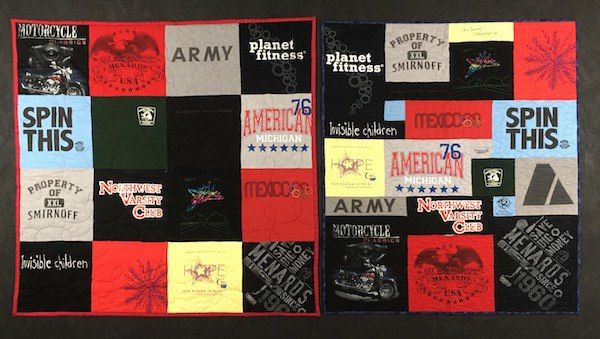
Left: Project Repat blanket Right: Too Cool T-shirt Quilts
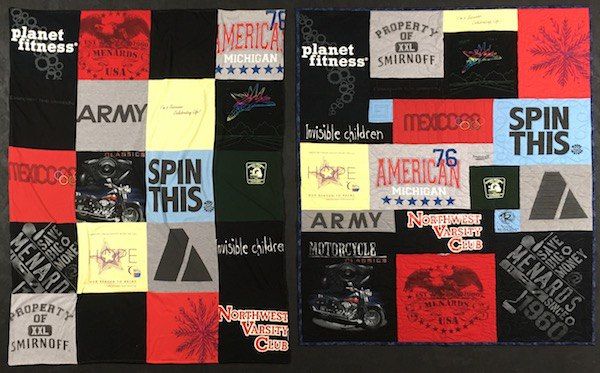

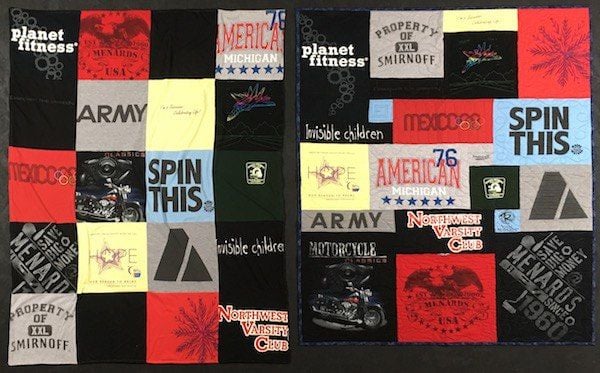
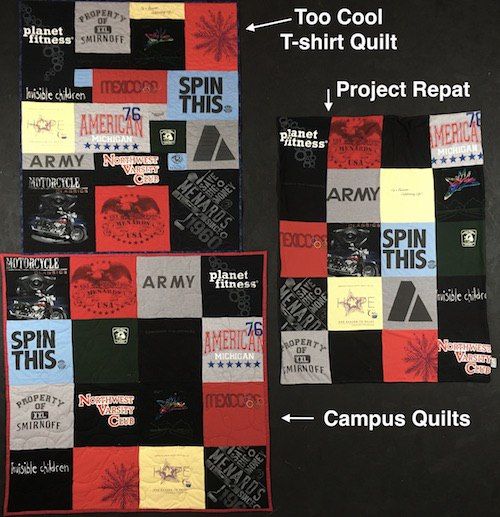 Next, we ordered a quilt from Campus Quilts and a blanket from Project Repat.
Next, we ordered a quilt from Campus Quilts and a blanket from Project Repat.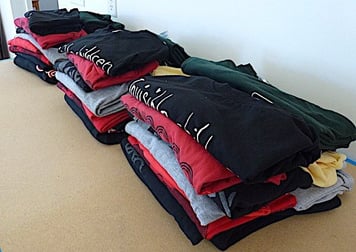 We collected 3 groups of 15 identical T-shirts. I choose T-shirts that would represent many different types of T-shirts that you might have. This included T-shirts with very large and very small designs. I also had T-shirts with graphics on the front, back and sleeves. We also included a sweatshirt, a very thin T-shirt and a child size T-shirt.
We collected 3 groups of 15 identical T-shirts. I choose T-shirts that would represent many different types of T-shirts that you might have. This included T-shirts with very large and very small designs. I also had T-shirts with graphics on the front, back and sleeves. We also included a sweatshirt, a very thin T-shirt and a child size T-shirt. 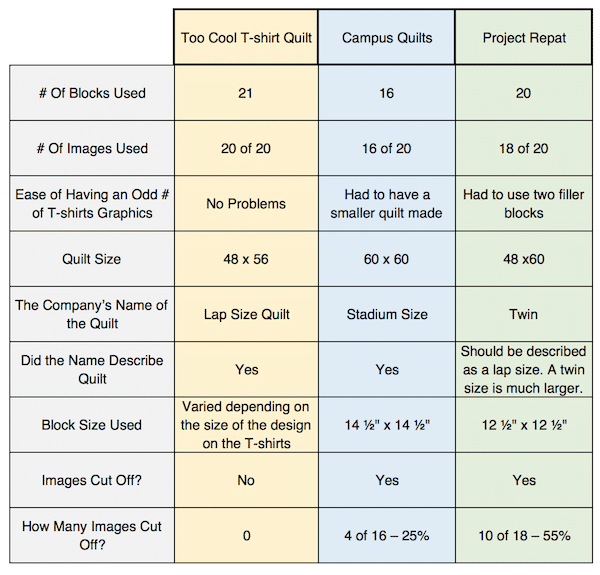
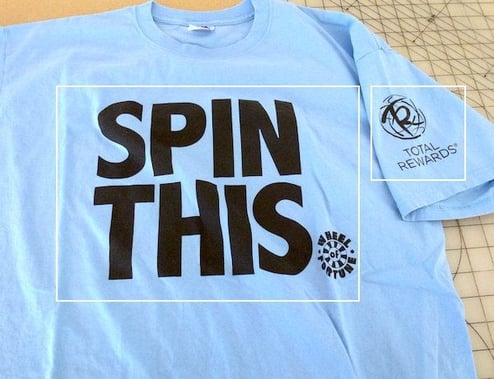 Not all T-shirts have the same size graphics. The photo here shows there can be large and small logos on the same T-shirt.
Not all T-shirts have the same size graphics. The photo here shows there can be large and small logos on the same T-shirt.



